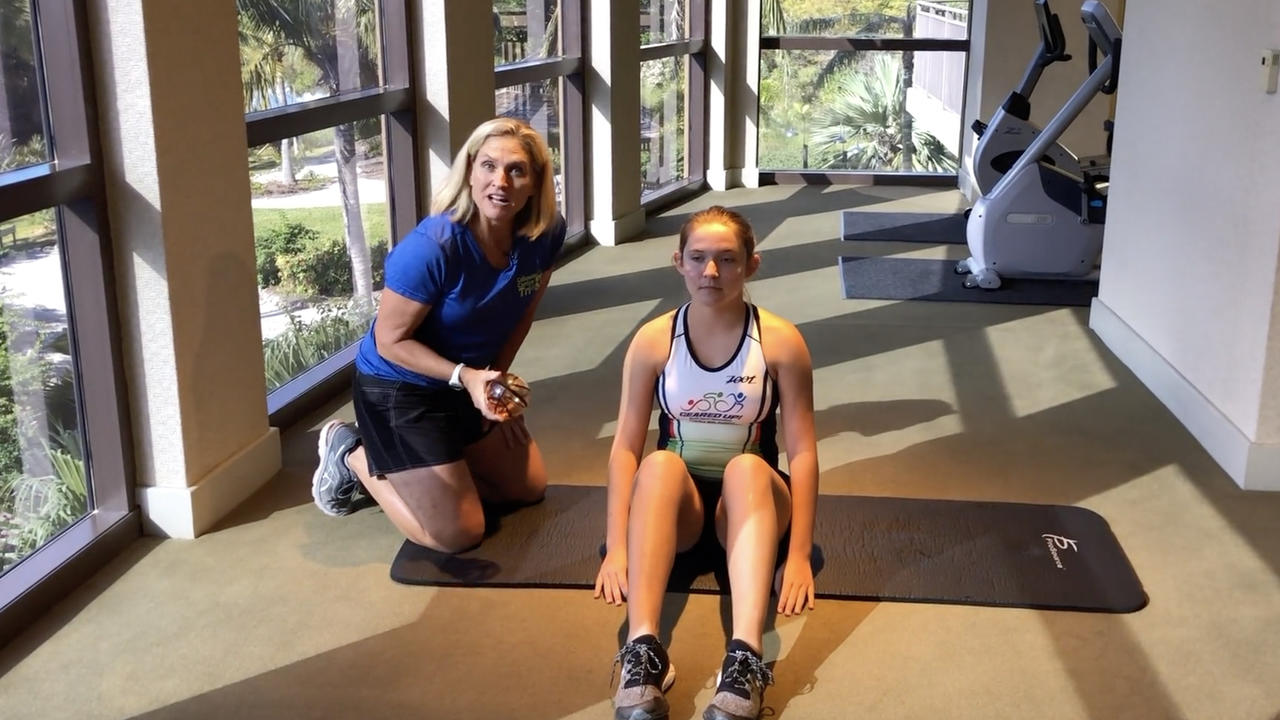Use Bodyweight Exercises to Incorporate Functional Conditioning Into Any Workout

Angie and Josie working in the Fitness Center - filming for our incredibly powerful Membership Video Library.
‘Functional’ and ‘functionality’ have become popular buzzwords in the fitness industry over the past 10 years.
While isolation exercises (i.e. standard chest press or mid-row) are still common, compound and multi-planer movements (i.e. lunge with rotation) have solidified their place in fitness programing by demonstrating their effectiveness with enhancing everyday movements that would otherwise cause injury to an ill-prepared body.
Our increasingly sedentary lifestyles mean that our genetically engineered highly mobile bodies are immobile for several hours a day (sitting at a desk, watching TV) and thus we develop not only postural weaknesses, but also strengthen deficiencies for activities like gardening, household chores, and recreational activities such as walking the dog, playing sports and family activities.
Traditional muscle conditioning workouts provide a unique opportunity to not only deliver exercises that challenge the body by using a variety of stimuli, but also to educate participants on quality movement that requires nothing more than their own body weight to perform.
Have you ever seen a show and marveled at the amazing ability of performers, gymnasts and other athletes to shift and hold their own body weight?
In fact, being able to lift their own body weight is often used as a measure of strength.
Bodyweight exercises are ideal for several reasons:
First, they require no equipment and as such, these exercises can be performed anywhere and at any time and lack of equipment can never be used as an excuse!
They promote multi-jointed, compound exercises.
Often bodyweight exercises require more than one joint action to be performed, meaning that more muscle groups are incorporated.
Let’s compare the humble push up with the bench press.
When performing the push up, either on the knees or toes, the wrist, elbow and shoulder joints are all involved. This means the muscles of the upper torso are incorporated in the exercise.
The abdominals and erectus spinae are also integrated to stabilize the torso, and finally, the muscles of the lower body maintain an isometric contraction to keep a strong lever for the arms to lift up and down (especially when the push up is performed on the toes).
In contrast, during the bench press, the body is well supported by the bench and the weight is lifted up and down using the shoulder, elbow and, to a lesser extent, the wrist joint.
Depending on how heavy the weight is, the lower limbs may or may not assist with an isometric contraction to assist with the lift.
It is clear, that there is much more involved with the classic push up than with the bench press.
Challenge to balance through points of contact.
Points of contact refers to how many bodily parts are in contact with the floor.
The more points of contact, the more stable the body is during the exercise, the fewer points of contact, the greater the challenge to balance.
An example of this concept is a straight leg deadlift.
As there are no additional weights being used, intensity can be increased by incorporating balance.
Traditionally a deadlift is performed with both feet on the floor, but it can also be executed with one leg. The opposite leg is lifted behind the body as the torso lowers towards the floor.
It is interesting to note that this is how a lot of people pick things up from the ground, by lifting one leg behind to counterbalance the torso weight being lowered forward.
Whereas a standard deadlift works the erectus spinae, hamstrings and glutes, balancing on one leg incorporates the muscles of the feet, calves and stabilizers of the ankle, knee and hip.
It is very functional, and a great balance exercise.
If you enjoyed this blog post, you'll really enjoy our 14 DAY MINDSET CHALLENGE which is part of our Monthly Membership program helping & supporting you toward living your best life!
Our Geared Up v2.0 theme for you is "Health, Wellness & Fitness in a Multi-Sport Lifestyle". Find out all of the ways we can support you through our Membership programs here.
Let's go on this journey together and change your life as always, “Practice with Purpose and Live with Passion!”
Angie

